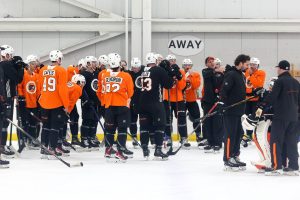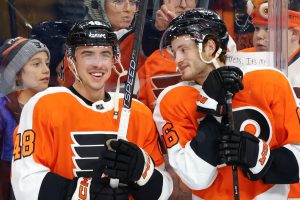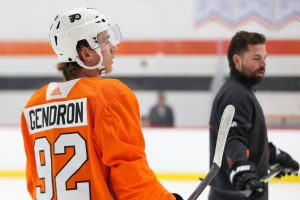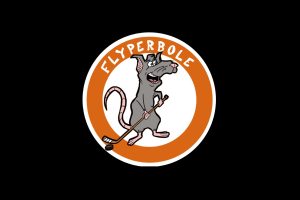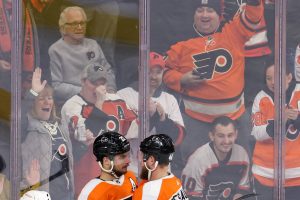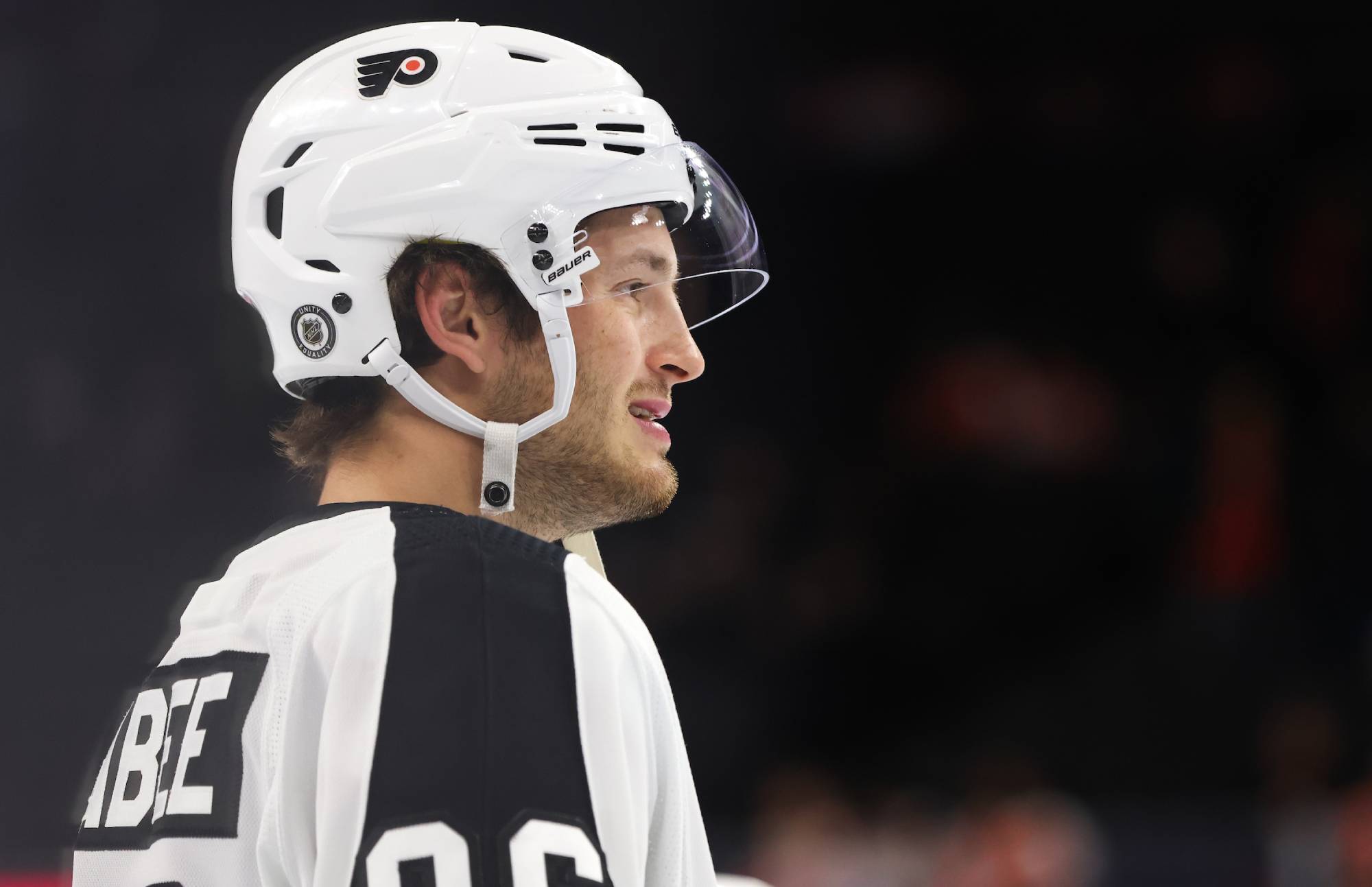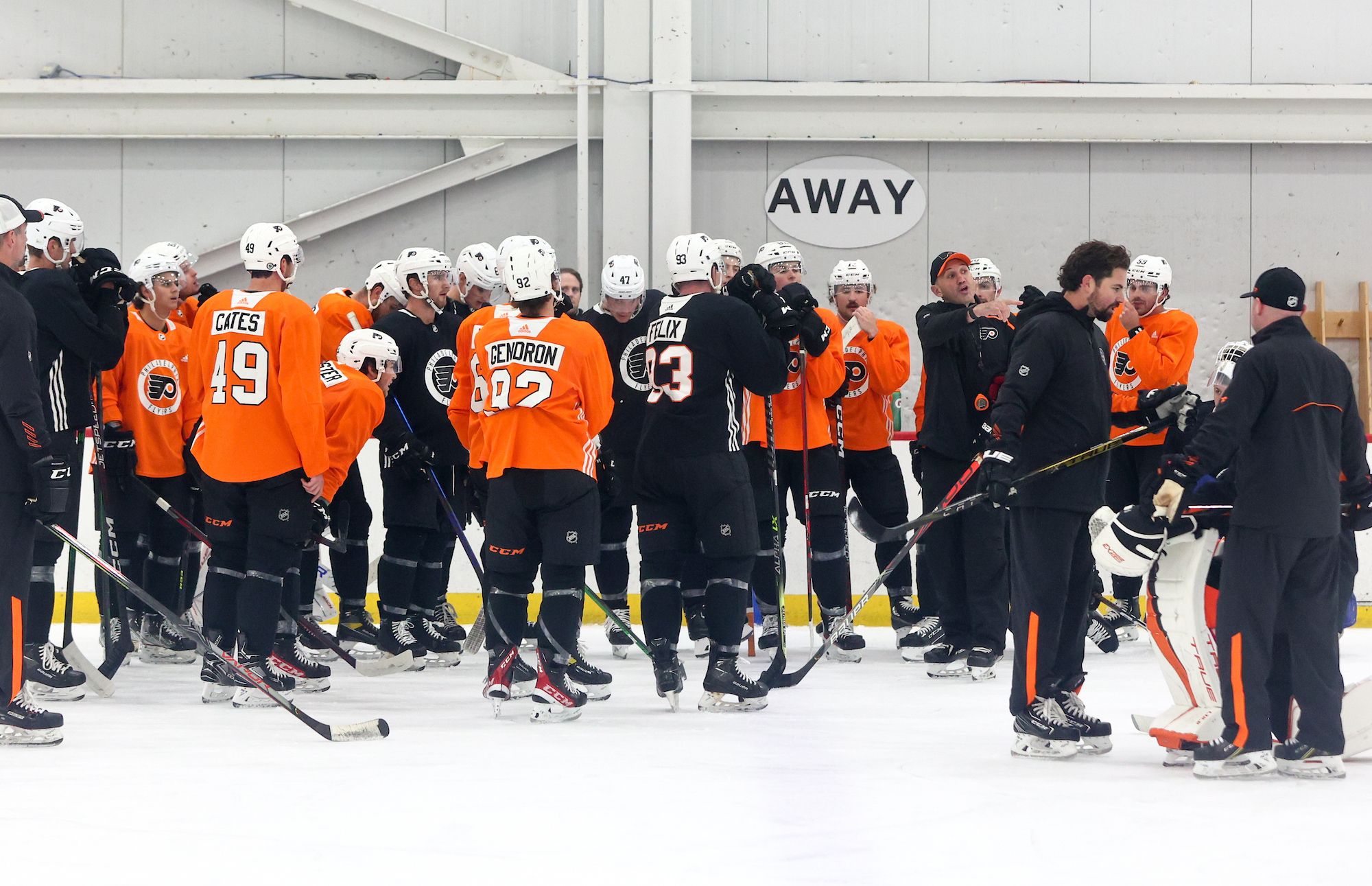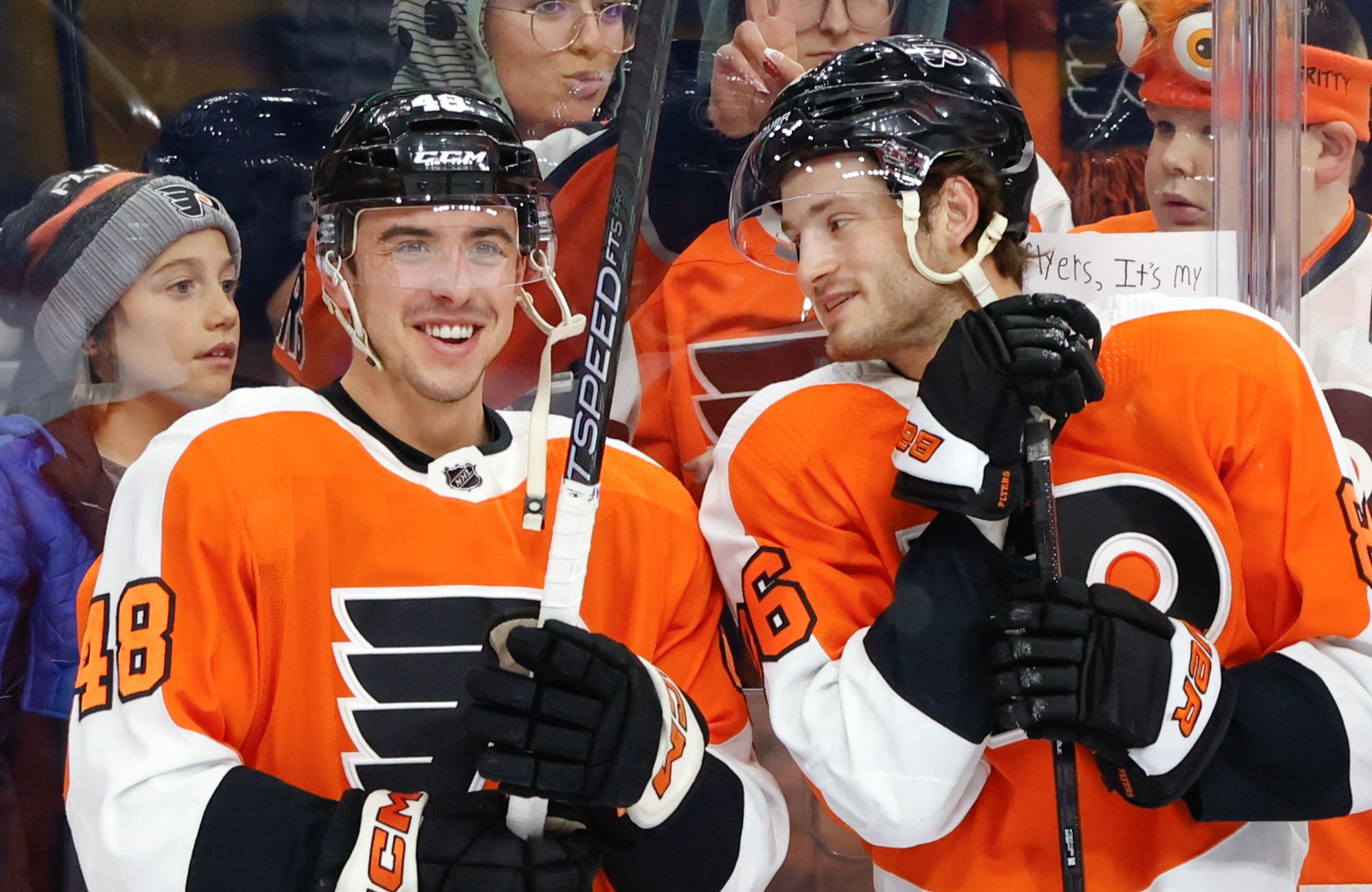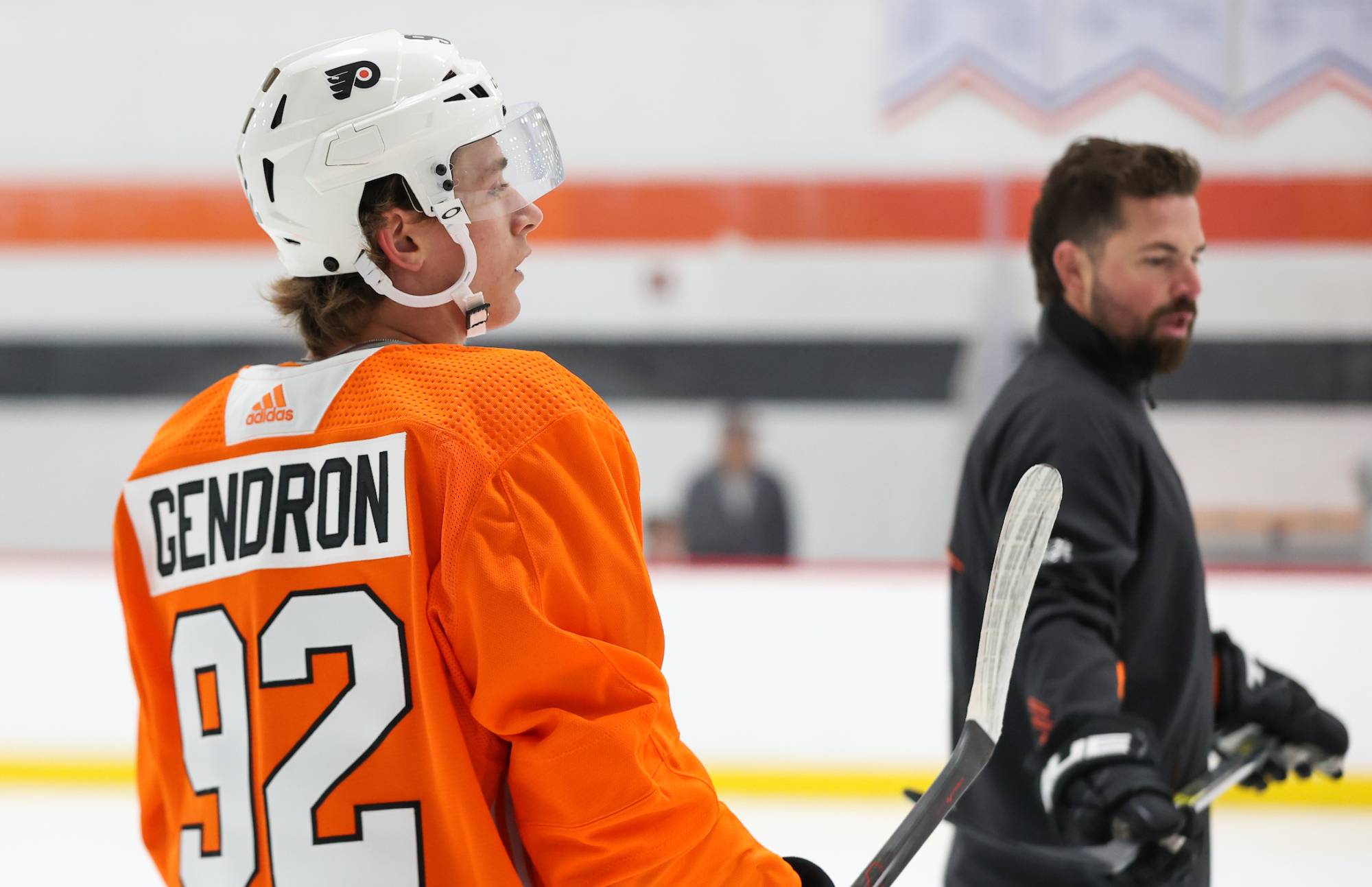Morning Observations is a feature where we break down the previous night’s game with an analytical eye.
#1: Not much experimentation in this one
Tuesday’s matchup with the New Jersey Devils was technically the first meaningless game of the season for the Flyers, but it didn’t truly have that vibe, considering the NHL debuts of Samuel Morin and Mike Vecchione. The novelty made the contest more interesting than even many of the games from the previous weeks, because everyone knew that the Flyers’ playoff chances were essentially dead by early March. Yesterday’s game, however, truly did feel like one that was played only because it was on the schedule. Columbus has locked up both a playoff spot and their seed, and the Flyers no longer have any incentive to win other than pride. In addition, the Philadelphia lineup was about as normal as possible. Morin was back with Lehigh Valley to aid in their playoff push, and Vecchione had not returned from the Hobey Baker ceremony that occurred last night. The novelty was gone.
Dave Hakstol didn’t really try many new things with the lines and pairings, either. Ivan Provorov received a few shifts with Shayne Gostisbehere (which was neat), and Roman Lyubimov returned for his first game since March 13, but that was about it for experimentation. The line combinations were fairly standard and no single player’s usage was dramatically adjusted. The Flyers essentially treated this like a normal game, except with the fans having full knowledge that the stakes were as low as possible.
#2: Mason’s last game as a Flyer?
If there was one central story surrounding this meaningless game, it was the fact that Steve Mason likely received his final start in a Flyers uniform. A pending unrestricted free agent, Mason has apparently had little contact with the organization regarding an extension, and considering the team’s decision to re-sign Michal Neuvirth in March, the writing appears on the wall for the 28-year old netminder.
If this was his last game in the orange and black, Mason ended on a high note. The two goals that he allowed were both off double deflections, and were far more difficult to stop than their points of origination might have one believe. He made a number of tough saves in close, with his double stop of Alex Wennberg in the first period probably his best moment. As he has for the vast majority of his tenure in Philadelphia, Mason gave the skaters a solid chance to win.
Yet it’s a near-certainty that he won’t be back. Mason admitted as much after the game, stating that his primary regret was never getting past the first round of the playoffs with the Flyers and noting that free agency wouldn’t be as stressful as the trade deadline because he would have a degree control over the process. The big narrative that has popped up in recent weeks is that Mason’s blunt comments after games may have contributed to the team’s apparent decision to move on from him. Mason commented on that theory today, stating, “Hopefully it hasn’t rubbed guys the wrong way. It’s strictly out of having high standards. I think that’s important. Maybe it’s better if sometimes I chose my words more carefully so as not to offend anyone too much, but at the end of the day I think guys in the room understand I’m speaking out of caring.”
For what it’s worth, Wayne Simmonds dismissed the possibility, and he’s obviously a key member of the leadership core. Dave Hakstol, on the other hand, did a bit of dancing around the questions. When asked if Mason’s outspokenness was an issue, the coach responded, “My teams, my experience, you always put the team first and speak from that experience. No matter what position that you play. For our group, team first mentality is absolute and it’s very important.” Pressed for a followup, Hakstol simply stated that “I think what happens inside the locker room is much more important than [post-game comments].” My guess is that there is something to the rumors that there exists a disconnect between the organization and Mason right now, and clashing personalities may play a role in that. At the same time, I doubt that post-game comments are the driving force here. The issues probably run far deeper, and that’s not meant to be a criticism of Mason — sometimes, a situation becomes untenable and it’s no single person’s fault. Considering Mason’s solid numbers as a Flyer, that’s the only explanation for this divorce that makes sense to me personally.
NHL.com Report & Highlights | Corsica.Hockey Game Recap Page | HockeyStats.ca Recap | NaturalStatTrick Recap | HockeyViz.com | BSH Recap | Meltzer’s Musings
#3: Provorov a stellar game
One of the positives that Flyers fans can take from this final stretch of the season is that Ivan Provorov is showing no signs of late-year slowdown. In fact, Provorov was one of the best players on the ice yesterday, leading the Flyers in score-adjusted Corsi at 61.21% and posting a stellar xG (81.75%). He was even credited with a goal on a beautiful wrist shot, though my guess is that the league will eventually switch that to a primary assist as the puck appeared to glance off Sean Couturier on its way past Sergei Bobrovsky. Regardless, it was surely a fun way to celebrate his Ashbee Trophy.
#4: Not convinced that PP1 is broken
The top power play unit has received a great deal of criticism over the final few months of this season, and it’s not unwarranted — goal production has dropped off substantially during a period of time when the team desperately needed it. However, I don’t think PP1 is something that fans should worry too much about moving into 2017-18. While the team’s struggles at 5v5 can not be solely chalked up to bad luck considering the team’s (at times) flawed shot selection strategies, I’m far more willing to defend the power play’s process. Heading into yesterday’s game, the Flyers led the entire NHL in shot attempts per 60 minutes, unblocked shot attempts per 60, and shots on goal per 60 during 5v4 situations. They also ranked second behind only Toronto in expected goals created per 60. By every offensive metric except goals scored, Philadelphia has a truly elite power play.
Remember, the Flyers rank this high despite a inept second power play unit that can barely create any sustained pressure at all. Everything is coming from the PP1 of Messrs. Giroux, Simmonds, Gostisbehere, Schenn and Voracek. And considering their elite shot creation and shot quality metrics, I see no reason to be concerned about that unit moving forward. Per Corsica, they would be “expected” to have scored 57.32 goals this year, yet they only potted 48 (49 counting Voracek’s tally yesterday). Temporary frustration aside, I suspect that next year the PP1 will be back in full force, as long as no major structural changes are made.
#5: Weal didn’t miss a beat
Jordan Weal was a surprise late scratch on Tuesday due to illness, but he was back in the lineup yesterday against the Blue Jackets, and he delivered a typical Weal game. It’s impressive that after just 22 contests , Weal has created what is seemingly a repeatable formula for success, but the proof is in the process and results. He yet again was tenacious in puck battles, constantly attacked the net, and helped his linemates to create extended shifts in the offensive zone. Unsurprisingly, that resulted in a positive score-adjusted Corsi (55.41%) and xG (62.89%), both of which have been nightly traditions for Weal during the past month. He has one more game to make his case to Ron Hextall and the organization that he deserves to be in the future plans, but for my money, he’s made a believer out of me — at least enough of one to want to pencil him into a top-nine role for next year and see if he can replicate this.
#6: The kids sure don’t look tired
Ivan Provorov has now played in 81 NHL games this season, while Travis Konecny hit Game #69. Yet both delivered strong performances even this deep into the season — Provorov scored a goal and contributed 21 strong minutes to the cause, while Konecny drew a penalty and was flying around the ice all game long. I asked Hakstol after the game what he thought of the youngsters’ ability to hold up to the rigors of an NHL schedule despite spending most of the year as teenagers, and the coach was complimentary of both players.
When it came to Provorov, Hakstol raved about the player who won the Ashbee Trophy in his first NHL season. “Obviously I think Provy has had a very consistent season and playing on the back end that’s a big load and we’ve been able to add to that. I thought tonight there’s probably a little more time and space out there then there normally is. He played an outstanding hockey game both directions.” As for Konecny, the coach described what he viewed as a more uneven rookie season, but noted that he 20-year old had obviously proven he was clearly physically ready for the NHL. “TK I think has done a great job. Physically, I think he’s done a great job. He’s maybe had some more ups and downs throughout his year but he’s continued to work, to show up, and really work to improve his game.” Per this answer, it seems like Konecny’s time spent on the fourth line and away from the second power play unit was not due to fatigue (as some theorized) and more part of what Hakstol believes to be the correct development process. Regardless, I do not get the impression that the coach is frustrated with Konecny personally, nor am I especially worried about him ending up in “the coach’s doghouse” permanently.
#7: What about Lyubimov?
Roman Lyubimov finally made his way back into the Flyers’ lineup yesterday, rejoining Bellemare and VandeVelde at 5-on-5. And as he’s done whenever placed with the two pillars of the league’s 20th-best penalty kill, Lyubimov helped them to even strength respectability, as Bellemare posted a 57.01% score-adjusted Corsi in 8:49 minutes with him, and VandeVelde was at 63.02%. That’s no fluke, as both players hover just above 50% from a Corsi standpoint with Lyubimov on the season, yet drop far below without him. Yet Lyubimov still apparently lost his coach’s confidence in the season’s second half, barely playing in March and April.
My guess is that Lyubimov will return to Russia, and I don’t blame him. It’s not like he’s a superstar or anything — at best, he’s an above-average play-driver for the fourth line without much scoring touch. But it’s frustrating because the Flyers could have used that this year. With him, the Bellemare line was respectable, but the team instead chose to stick Lyubimov in the press box for weeks at a time. He might not be a piece of the next truly great Flyers team, but he could have been a useful cog on some good ones.
#8: Win shot quality, get rewarded for distance
The Flyers continued their recent trend of generating chances in close rather than constantly resorting to point shots. As I’ve noted over the past few weeks, it seems obvious that the team made a conscious effort to cut down on the low-to-high play, and also have been more successful in generating rebounds off those shots when they are taken. They ran away with the xG battle at 5v5 yesterday, posting a 56.29% and outperforming their raw shot attempts rate. But amusingly enough, their goals all came from distance, despite their most highly-concentrated area being right in front. There’s nothing much to take from this, aside from the strange nature of bounces in hockey.
#9: Schenn’s late 5v5 surge promising
For months, my main critique of Brayden Schenn was that while his counting statistics looked fine, almost all of his production was coming on the power play. At 5v5, on the other hand, the Flyers struggled to stay above water from a play-driving standpoint, and Schenn was barely racking up any points at all. Ever since being moved to wing and placed with Sean Couturier, however, his performance at even strength has seen a substantial improvement. Note the surge in these three-game rolling average charts from Corsica.Hockey that begin around mid-March.
I’ve long believed that Schenn’s game fits better at wing than at center, and pairing him with the best play-driving pivot on the team probably helps to mask his weaknesses while also letting him spend more time in the offensive zone, where he is at his best. Maybe Schenn was almost bound to rebound considering his awful metrics in the season’s first half, but I do believe this Couturier-Schenn tandem works. Hopefully it’s something the team sticks with moving into 2017-18.
#10: Season looks like it will end with a not-fun whimper
If yesterday was any indication, tonight’s season finale versus the Carolina Hurricanes seems like it will be devoid of every the excitement that marked the Devils game last Tuesday. Vecchione should be back in the lineup and that will be nice to see, but with the Phantoms in a tight race for a playoff spot, it’s legitimately possible that Sam Morin may not even see a recall, nor any of the other exciting prospects (Travis Sanheim, Robert Hagg). Lehigh Valley had a game last night, but they don’t play today nor do they have a game until Wednesday, so some call-ups are possible. Getting a glimpse at some of the kids would at least be tossing a bone to the fans who are still watching this team, and for that reason only, I hope tonight is more like Tuesday and less like Saturday.

